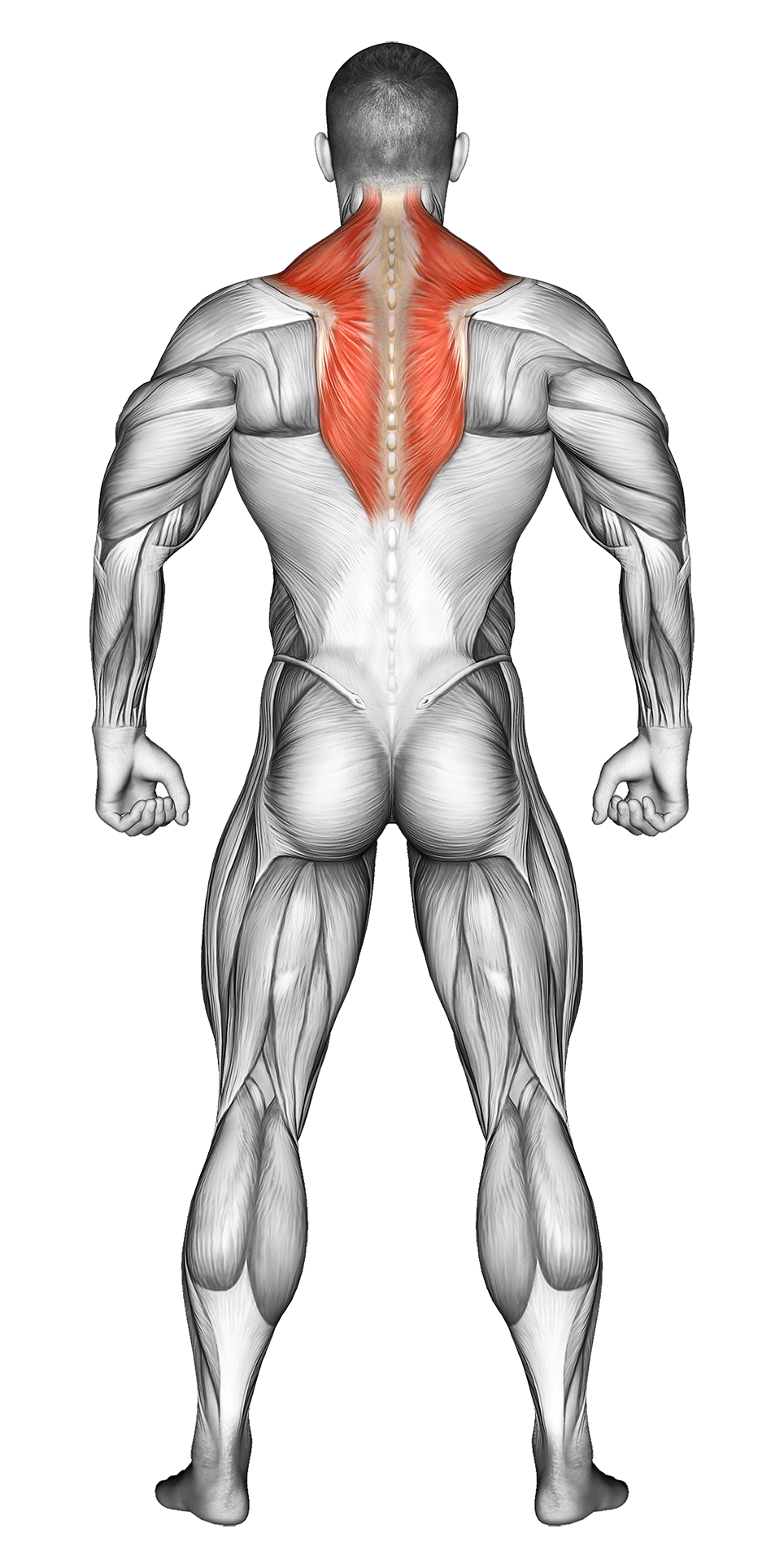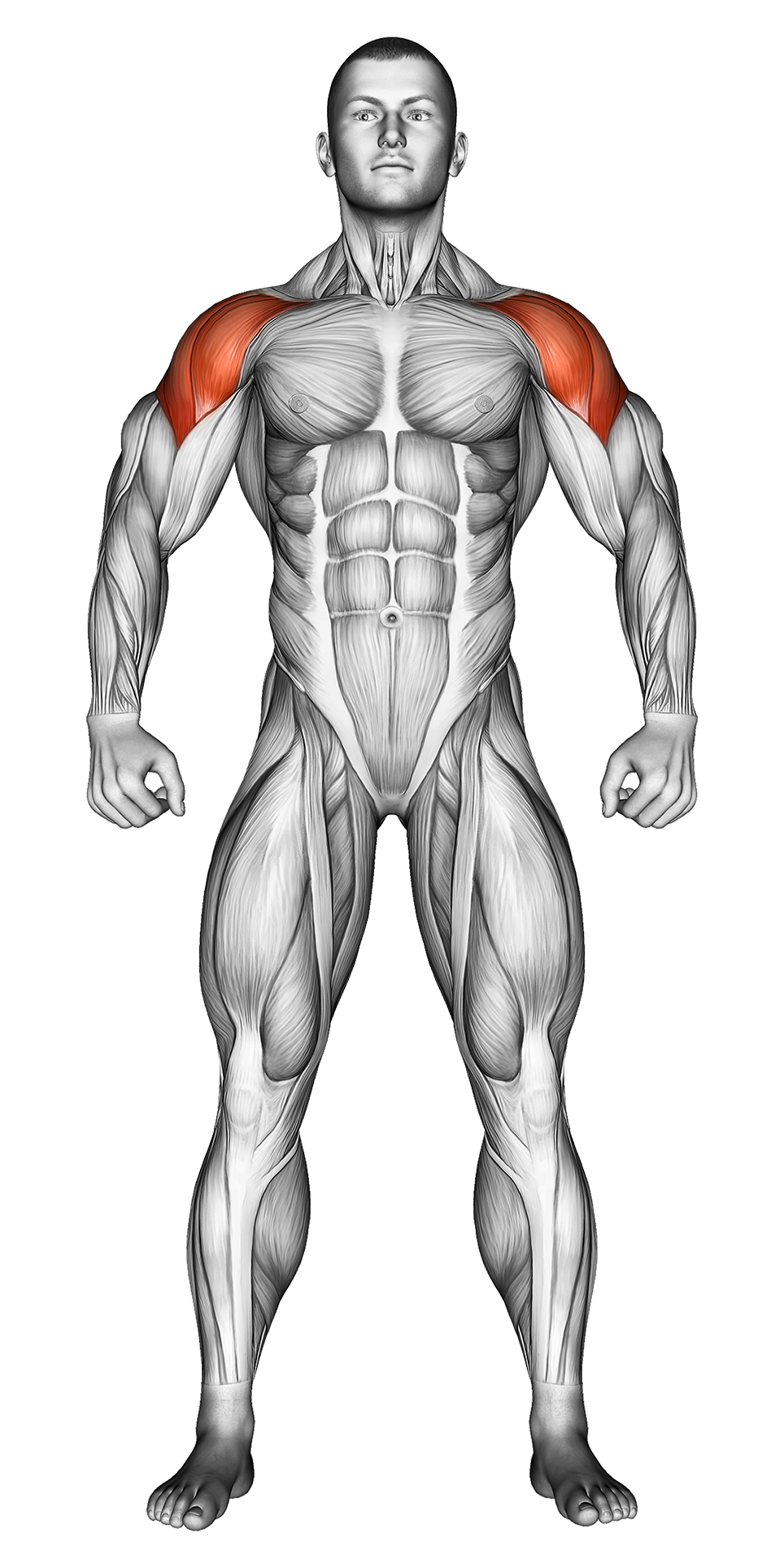Standing Front Barbell Raise Over Head: Video Tutorial & Exercise Guide
| Workout | Standing Front Barbell Raise Over Head |
| Primary Muscle Group | Shoulders |
| Secondary Muscle Group | Chest, Traps |
| Equipment Required | Barbell |
| Force Type | Pull |
| Mechanics | Isolation |
| Exercise Type | Strength |
| Difficulty | Intermediate |
Standing Front Barbell Raise Over Head: Video Tutorial & Exercise Guide
Muscle Groups
- Primary Muscle Group- Secondary Muscle Group
Standing Front Barbell Raise Over Head - Step-by-Step Guide
Standing Front Barbell Raise Over Head Overview
Benefits of Standing Front Barbell Raise Over Head
Standing Front Barbell Raise Over Head Pro Tips & Advanced Techniques
Progression Plan for Standing Front Barbell Raise Over Head
Frequently Asked Questions (FAQs) Of Standing Front Barbell Raise Over Head
Secondary Muscles

Chest

Traps
How to do Standing Front Barbell Raise Overhead – Step-by-Step Guide
- Step 1: Stand with your feet shoulder-width apart, holding a barbell with an overhand grip. Your hands should be placed slightly wider than shoulder-width apart, and the barbell should rest in front of your thighs.
- Step 2: Engage your core and keep your chest up. Begin the movement by raising the barbell in front of you, keeping your arms straight but not locked. Lift the barbell to shoulder height first.
- Step 3: Continue raising the barbell overhead until your arms are fully extended above your head. Keep your elbows slightly bent throughout the movement.
- Step 4: Pause briefly at the top, then slowly lower the barbell back down to shoulder height, and then to the starting position in front of your thighs.
- Step 5: Repeat for the desired number of repetitions, maintaining control throughout the entire movement.
Standing Front Barbell Raise Overhead Overview
The Standing Front Barbell Raise Overhead is an effective compound exercise that targets the anterior deltoids (front shoulders), upper chest, and traps. This movement combines the benefits of a standard front raise with an overhead press, allowing for greater shoulder activation and full range of motion.
This exercise also helps improve shoulder stability and strength, making it a great addition to any upper-body workout routine. It can be used to build shoulder mass and enhance performance in pressing movements.
Benefits of Standing Front Barbell Raise Overhead
The Standing Front Barbell Raise Overhead targets multiple muscle groups, including the anterior deltoids, upper chest, and traps, which helps develop overall shoulder size and strength. The overhead phase of the movement also engages the core, making it a functional exercise for improving stability and balance.
This exercise promotes shoulder mobility and endurance while increasing strength, which is particularly beneficial for athletes and individuals looking to enhance their pressing power.
Standing Front Barbell Raise Overhead: Pro Tips & Advanced Techniques
Keep your core engaged throughout the movement to avoid arching your lower back. Focus on a controlled lift and lower phase to maximize muscle activation and avoid using momentum. For added difficulty, you can slow down the eccentric (lowering) phase or add a pause at the top of the movement to increase time under tension. Avoid lifting the barbell higher than necessary to prevent unnecessary strain on the shoulder joints.
Progression Plan for Standing Front Barbell Raise Overhead
| Level | Sets | Reps | Progression Tips |
|---|---|---|---|
| Beginner | 2-3 | 8-10 | Start with a light barbell or even a light resistance bar to master form and control before adding weight. |
| Intermediate | 3 | 10-12 | Increase the weight gradually, focusing on full range of motion and smooth, controlled movements. |
| Advanced | 4 | 12-15 | Use heavier weights, slow down the lowering phase, or add a pause at the top to increase time under tension. |
Frequently Asked Questions (FAQs) of Standing Front Barbell Raise Over Head
What muscles does the Standing Front Barbell Raise Overhead target?
This exercise primarily targets the anterior deltoids (front shoulders), upper chest, and traps, while also engaging the core for stability.
Can beginners perform the Standing Front Barbell Raise Overhead?
Yes, beginners can perform this exercise using a light barbell or resistance bar to focus on form and control before increasing the weight.
How can I make the Standing Front Barbell Raise Overhead more challenging?
To make this exercise more challenging, you can increase the weight, slow down the eccentric phase, or add a pause at the top of the movement to increase time under tension.
What common mistakes should I avoid during the Standing Front Barbell Raise Overhead?
Avoid using momentum or arching your back. Keep your core engaged and focus on lifting the bar with your shoulders, not your lower back.
How often should I include the Standing Front Barbell Raise Overhead in my routine?
Incorporate this exercise 1-2 times per week as part of your shoulder or upper-body workout routine for improved shoulder strength and stability.
Share
